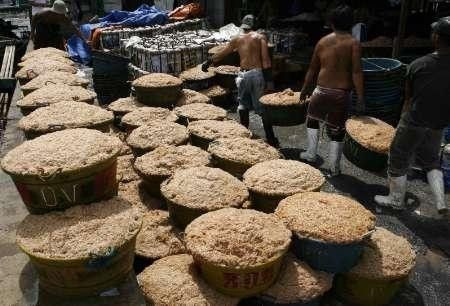Plastic Pollution In High Seas Threatening To Damage Marine Eco System: Bigger Than The Scare On Rising Sea Levels

Amidst the panic and anxiety triggered by rising sea levels abetted by the phenomenon of climate change, here comes the news of huge plastic pollution in the high seas that is threatening the marine eco system, including the food cycle and posing big harm to the human life outside.
A recent study in the U.S. did a pioneering service by estimating the mega scale of plastic pollutants in the oceans. The study has claimed that 5 trillion pieces of plastics, weighing nearly 269,000 tonnes are floating in the world's oceans and harming the food chain. Given the global population is around 7.2 billion, it means 700 pieces of plastic waste are floating in the oceans, on a per head basis.
The research, published in the journal Plos One, is the first study on plastic pollutants in the world's oceans. The study was conducted by Marcus Eriksen of the Five Gyres Institute in Los Angeles who derived the data derived from 24 separate ocean expeditions between 2007 and 2013, to sample plastic pollution. His team is made up of scientists from the U.S., France, Chile, Australia and New Zealand. It found that the plastic pieces were largely derived from products such as food and drink packaging and clothing.
Global Phenomenon
The study highlighted the menace of plastic pollution in oceans and noted properties like buoyancy and durability adding to it. The toxicants travel through the environment and accumulate synthetic polymers as a hazardous waste. Through photodegradation and other weathering processes, plastics undergo fragmentation in the ocean and converge with subtropical gyres. Generation and accumulation of plastic pollution occurs in closed bays, gulfs and seas surrounded by populated coastlines and watersheds. The impact of plastic pollution may not be uniform. It will manifest in varied ways. It can happen through ingestion and entanglement of marine fauna, ranging from zooplankton to cetaceans, seabirds and marine reptiles.
The adsorption of persistent organic pollutants onto the plastics will transfer into the tissues and organs through ingestion and impact the marine megafauna as well as lower-level organisms and their predators. They are accentuated by the persistence of floating plastics, ranging from resin pellets to large derelict nets, docks and boats across oceans that transport microbial communities, algae, invertebrates and fish to non-native regions.
Large pieces of plastic strangle animals, including seals and smaller pieces ingested by fish and are fed into the food chain to finally reach the humans. This becomes acute due to the chemicals contained within plastics, as well as the pollutants that plastic attract once they are in the marine environment.
Ocean Gyres
In this interesting cycle, turtles will eat plastic bags and fishes ingest fishing lines. Says Julia Reisser, a researcher from University of Western Australia: "the chemical impacts are deadly. Plastic gets into the water and acts like a magnet for oily pollutants." As they spread out around the globe, much of the rubbish gets accumulated in five large ocean gyres, which are circular currents and churn up plastics in a set area. Among the major oceans threatened by plastic-filled gyres, the "great Pacific garbage patch" stands out with its expanse, that is roughly equivalent to Texas. Concerned by the scale of plastic pollutants, the American Chemistry Council representing U.S. plasticmakers issued a statement and shared the concerns and underscored the importance of recycling plastics, said a report in Washington Post.





















